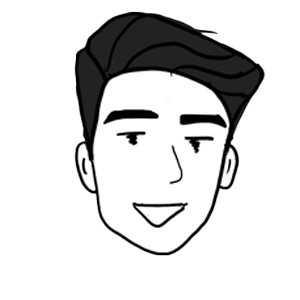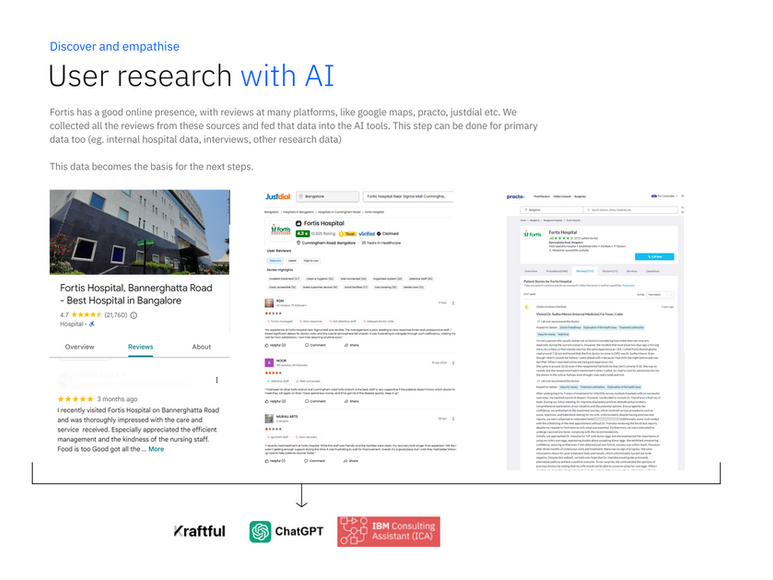
Fortis AI: Design for healthcare
OVERVIEW
DETAILS
Fortis Hospital faces challenges in efficiently analysing and utilising the abundance of patient data available, leading to suboptimal care delivery and treatment outcomes.
The brief was to design an AI-based solution that optimises data analysis, enhances clinical decision-making processes, and enables personalised healthcare delivery.
We tested different AI tools for use in the design process, analysing their strengths and shortcomings. Also studying IBM's AI framework for their products. Ultimately, we developed a new design thinking framework↗ tailored for AI, leveraging its strengths and incorporating human inputs where necessary.
Winning entry
IBM AI Hatch'a thon, July-Aug 2024 (Group of 5)
My Contribution: Framing and applying the design thinking process adapted for AI, Designing and building the AI assistant
Tools USed
IBM Consulting Assistant (ICA), ChatGPT, Gemini, Copilot, Adobe Firefly, Ideogram, Dashtoon studio, Galileo AI
The final deliverables were in 2 parts: (you can click to skip to those parts)
1) An AI-based application and the user journey of the patient and hospital staff ↗
2) A working AI design assistant using ICA tool for Fortis, which follows the above-developed process ↗
INITIAL ANALYSIS
Even before designing, we compared different prompting approaches and AI tools to see which works the best. The intention was to find the best method which could be used for the IBM Consulting Assistant (ICA) tool.
Rethinking the Design process "FOR AI"
In design thinking, we try to address the user's problems in the best way possible. Similarly, AI also has some requirements (like getting the right data, training, user privacy, etc) which need to be addressed. They are summarised well in IBM's AI framework (image 2). We used this as a tool to evaluate and benchmark the ideas to arrive at the final design process (image 3). Different tools were used at various stages of the design process (image 1).
Designing the Solution
Analysis and ideation became a lot easier with AI assitance. We could use different strategies (like getting insights from social media data, quick and through analysis of market, ideation on "all" the pain points, trying "all" idea combinations, and evaluating them on the AI requirements) which could not be tried earlier.
Final output 1: Fortis AI
To solve the identified problems of high costs, wait times and bad communication for patients; work stress, time and understaffing for doctors; record-keeping challenges of hospital management; we proposed an AI-powered triage system for the hospital, which caters for all these problems. It also takes into account available data, which can be used to train the AI triage system.
Final output 2: The AI Design Assistant
After going through the design process, we also attempted to build a design assistant for Fortis. So that someone from their staff/decisionmaker/representative could enter a few prompts, the assistant could run the whole design thinking process for them and provide them with insights and solutions. We used ICA for building this. Right now it is limited to text-based outputs, but connecting it to other AI applications (eg, Galileo for UI, Invideo for videos, etc) is the step forward for it to realise its full potential.
*Click the play button in the video to see the walkthrough
This flowchart explains the working of the assistant. All the Blue boxes are the inputs the assistant needs from the user. Steps shown in the video are also marked accordingly.

Conclusion
We were initially sceptical about incorporating AI into our workflow, concerned about its inaccuracies and other potential issues. But at the end of this exercise, we realised that despite its current issues, AI is a great tool to assist the design process; it takes away a lot of redundant tasks and aids us where we humans fall short. We ultimately saved about 46% of our time when AI was assisting us.


Related Projects
































